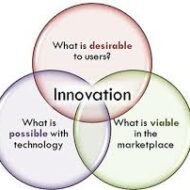Posted by Managementguru in Project Management
on Mar 6th, 2014 | 0 comments

A project can be made into a roaring success provided you have made your in-depth analysis and research to understand the nuances of the industry. Running a restaurant though looks cheesy from outside needs meticulous planning. Before plunging into the market it is better to have the data ready with you. How prepared you are to run the business is not the question; how well prepared are you to face the hurdles and challenges that come your way is all that matters. Only if you withstand the rough weather may you proceed to grow and then expand. Industry Insights Restaurant industry is one such area where many people try to set their foot daydreaming of immediate success. Unfortunately the scenario doesn’t warrant instant success. Any business that has a slow and steady growth makes it to the top. Have you ever thought about the wherewithal needed to run the show! The industry looks very appealing and promising from outside but reality matters. The industry’s main focus is on supply chain management where your primary and ultimate focus revolves round your customers, who are your main focal point. Info Courtesy: AycockMarketing Value Added Services Customer satisfaction should be your vision, mission, objective and goal. Of course you want to make profit. For what else in the world have you entered this business. But think about it, if you are not able to attract crowds, the effort is wasted. The qualityThe varietyThe appealThe presentationThe treatmentThe ambienceThe refreshment, that is being offered to the customers should make them feel special and worth the value of money they are shelling out to have an evening out with their family or friends. Rising costs make people think twice before they decide on their choice of restaurant. Be sure about the class of people whom you want to cater the needs. Go for the plan accordingly and design your restaurant. Is Your Design Appealing? The design includes a sober atmosphere where the visitors can relax, mild lighting that is soothing to the eyes, mellifluous music that creates a magical effect and the choice of drapes and furnishings that add grandeur. The core concept of food industry is “customer satisfaction“. A company’s greatest strength is the quality of its professional management. You have to manage your human resource personnel, the waiters, waitresses, the chefs, the managers, billing clerks in such a way that their one and only motive is to give quick service and great service the first time and every time. Managing Your Financials Managing your financials is an absolute necessity. The initial investment has to be taken care of since you do not know the period it takes to establish yourself in the industry. How, big chain of restaurants is run successfully all over the world? First four or five years are particularly important to prove your credibility both to yourself and others. They do their complete market research wherein the customers’ preferences are jotted down and taken into consideration. High performing and high potential managers are put into place to run the show without a hitch. Well trained waiters are a big plus. Big companies diversify to invest their profits in ever prosperous areas like food industry, where people are constantly looking for new arrivals and the “brand image” that the big companies establish cannot be matched by small time players. Great service is the key factor that makes these big time players unique. Locational Advantage Locational advantage is the most important criterion for a restaurant industry. Sufficient space must be provided for parking and the access to the location be made a pleasurable experience. Don’t go for guidance from your local competitors or friends,...

Posted by Managementguru in Business Management, Marketing, Principles of Management
on Mar 4th, 2014 | 0 comments

The Realm of Product Innovation A manufacturer or a service provider, who aspires to be successful in a business market, must indulge himself in research, pertaining to consumer preference as well as the various stages of a product life cycle. This will give him a better chance to make his future decisions concerning the product and also the wisdom to evolve strategies accordingly. Developing a product and introducing it into the market demands certain amount of forethought and prudence. The first step is to study the market, to understand consumer preference as well as to gauge whether your product will be appealing to the customers existing in that market. The prerequisite for this would be market segmentation, that is to statistically estimate the demographic quotient (people belonging to different age groups and ethnic societies) of the sample population and decide on the customers whom you want to target. A product’s success depends mainly on two things: 1) Innovation-lateral thinking, by which you let loose of all your unorthodox methods and stick onto some novel ideas of marketing. 2) Customer-oriented marketing rather than product oriented. This customer oriented concept is advocated by modern marketing consultants and it has proven to be a fantastic proposition. More than the actual product, people like to know more about the values that they obtain out of that product. The secret behind success will be to hit the right note, by propagating more about the value added services that go with the product. Expectations Created by the Product When a product is introduced in a market, say, automobiles for example, since every tom, dick and harry is fond of cars and bikes and they talk a lot about it. It is looked upon by prospective customers with great expectations, which might be due to the great hype created by the manufacturer through advertisements in electronic media, papers and magazines. The product as it hits the market will instantaneously make it big, if it has the right mix of intangible and augmented benefits that make customers happy and they feel that they have bought something worth the money paid for. A luxury car is well received by the market, irrespective of the price tag that is stuck to it, just because of the value added benefits such as, delicacy, great speed, high-performance, safety, insurance and warranty. Product Pre-Launch Analysis Before launching a product, industry analysis is a must, as various similar products might exist and it comes to the question of how different and appealing your product is, for market acceptance. Even minor things can make a big difference, say, for instance, if you are able to float the cheapest car, in terms of price but with great fuel efficiency, the results are obvious. The strategy would be to introduce innovations not only in your product but also in your thinking. Best products emerge as a result of tuning in your wavelength with that of the consumers’. Product Life Cycle A product gets introduced, grows, matures, stabilises and slowly withers off, just like a human being. No man is eternal and so is a product. You may argue that some products are in the limelight for more than their share of lifetime. If you keenly observe, that would have been the result of makeover changes to the product in lieu of the change in people’s liking and analysis of market trend. Some products have a second chance to prove their mettle. They go into hibernation for a while and then re-enter when market conditions seems to be favorable. The perspective from which you look at the life cycle of a product may cast a different idea...




